Worried about your artificial grass quality? Unseen manufacturing flaws can ruin your projects and your reputation. Understanding the process is your best tool for ensuring quality from start to finish.
For wholesale buyers, the key isn’t memorizing every manufacturing step, but knowing the critical quality checkpoints. Understanding yarn extrusion, tufting, and backing allows you to ask the right questions and implement effective inspections to guarantee the turf you receive is exactly what you ordered.

Over my years in the artificial grass industry, I’ve met many buyers like you. They are sharp business owners, but they get overwhelmed by technical jargon. They want to know the bottom line: "Is this a good product?" The truth is, a good product isn’t just about the final sample. It’s about a consistent and well-controlled manufacturing process. You don’t need to be an engineer to get great turf. You just need to know where to look and what to ask. Let’s walk through the key stages so you can feel confident in your next purchase.
What is the yarn production process in artificial grass manufacturing?
Are you confused by all the different yarn types? Choosing the wrong yarn can lead to weak, faded, or unnatural-looking turf, which ultimately disappoints your clients and hurts your business.
Yarn production starts with melting raw materials like polyethylene (PE) and polypropylene (PP) with UV inhibitors1 and colorants. This mix is extruded into fibers, which are then stretched and cooled. This process determines the yarn’s final shape, softness, resilience, and resistance to sun damage.
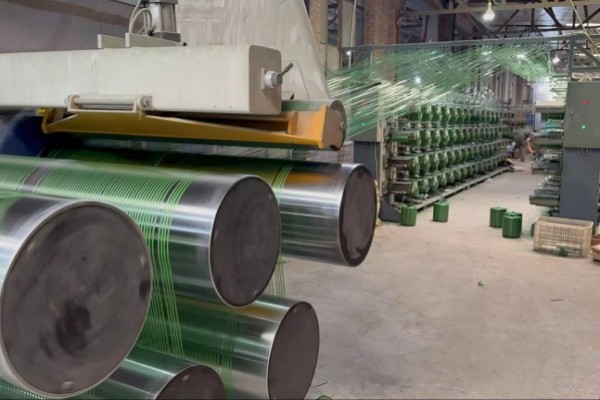
The yarn is the most visible part of artificial grass, and its quality is critical. Think of it as the foundation of the turf’s look and feel. The process starts with mixing polymer granules (PE for softness, PP for stiffness) with a color masterbatch and crucial UV inhibitors. I’ve seen projects fail because a factory tried to save a few cents by using a poor-quality UV inhibitor, and the turf faded in just one year. As a buyer, you must insist on seeing test reports for UV resistance.
Key Quality Checkpoints in Yarn Production
Once mixed, the material is melted and pushed through a die plate in a process called extrusion. This creates the specific shape of the yarn blade—like a "C" shape or "W" shape, which affects how well the grass stands up. After extrusion, the fibers are stretched and cooled. This step, called annealing, is vital for the yarn’s strength.
| Material Feature | Primary Use & Benefit | What to Ask Your Supplier |
|---|---|---|
| Polyethylene (PE)2 | Main grass blades; soft to the touch. | "What is the Dtex of the PE yarn?" |
| Polypropylene (PP)3 | Thatch layer; provides support and resilience. | "Is the thatch layer made from PP?" |
| UV Inhibitors | Protects from sun damage and fading. | "Can you provide the UV-test report (e.g., 3000 hours)?" |
| Masterbatch | Provides the color. | "What brand of masterbatch do you use?" |
Your job isn’t to operate the extruder. Your job is to verify the quality of the ingredients going into it.
How does tufting work in artificial grass manufacturing?
Have you ever seen artificial turf that loses its fibers easily? This "shedding" comes from poor tufting, which results in a sparse, weak lawn that simply won’t last long-term.
Tufting works like a giant sewing machine. Hundreds of needles punch the yarn into a primary backing fabric. A small hook grabs and pulls the yarn, creating a loop. For most landscape turf, a knife then cuts the loop, creating the individual blades of grass.
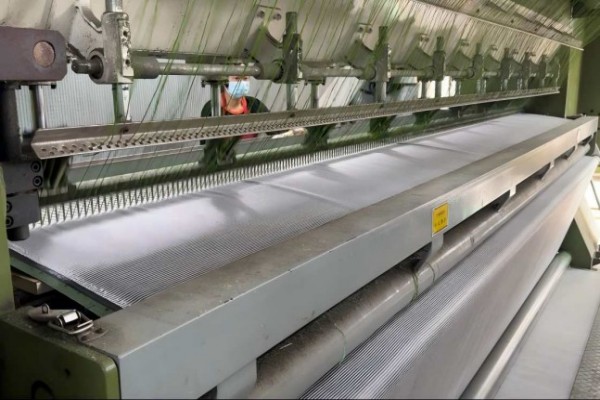
This is where the turf really starts to take shape. The tufting machine determines three critical specifications that you, as a buyer, must pay attention to. These specs are often listed on a product data sheet, but I’ve learned from experience that you can’t just trust the paper. You need to check the physical product. I once worked with a client who ordered turf with a high density on paper, but the actual product that arrived was sparse. The factory had changed the machine settings to save on yarn. This is a common issue and why physical inspection is non-negotiable.
How Tufting Parameters Affect Final Quality
Understanding these parameters helps you verify that you are getting what you paid for.
| Parameter | What it means | Impact on Quality |
|---|---|---|
| Gauge | The distance between the rows of stitches. A common gauge is 3/8 inch. | A smaller gauge means stitches are closer together, contributing to a denser feel. |
| Stitch Rate | The number of stitches per 10 cm in a single stitch line. | A higher stitch rate means more yarn is used, resulting in a plusher and more durable turf. |
| Density | The final result of gauge and stitch rate (stitches per square meter). | Higher density equals a fuller look and better wear resistance. This is a key indicator of quality. |
When you get a production sample, don’t just look at it. Count the stitches. Feel the density. Compare it directly to the pre-production sample you approved. A trustworthy supplier will ensure these numbers match perfectly.
Why is the backing process so important in artificial grass manufacturing?
Have you ever dealt with turf that cracks or falls apart from the back? The backing is the skeleton of the entire system. If the backing fails, the best yarns in the world become useless.
The backing process is crucial because it locks the tufted yarn in place and gives the turf its strength and stability. A coating, usually SBR latex or polyurethane (PU), is applied to the back of the tufted material, permanently binding the fibers to the backing fabric.
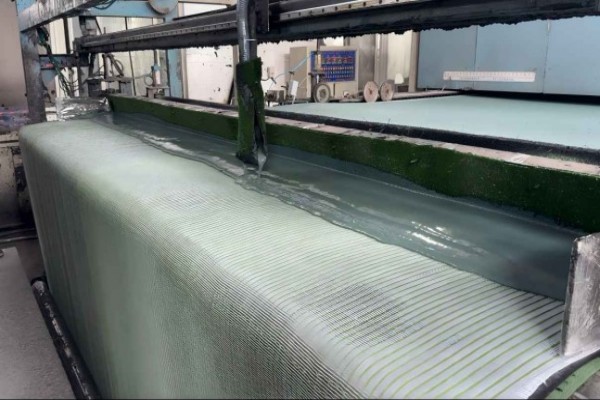
After tufting, the grass blades are still just loose loops held in the primary backing. The turf has no real strength. To fix this, the roll is sent through a coater. A liquid coating is applied, and then the turf passes through a long oven to dry and cure the coating. This locks every single blade of grass in place—a property we call "tuft lock." A strong tuft lock is essential. You should be able to grab a few blades of grass and pull on them with significant force without them coming out. If they pull out easily, the coating process was poor.
SBR Latex vs. PU Backing: A Buyer’s Guide
For buyers in demanding climates like Saudi Arabia, the choice of coating material is critical.
| Feature | SBR (Styrene-Butadiene Rubber) Latex | PU (Polyurethane) |
|---|---|---|
| Cost | More affordable. | More expensive (around 20-30% higher). |
| Strength | Good tuft lock. | Superior tuft lock and overall strength. |
| Water Resistance | Absorbs some water, can degrade in very wet or humid conditions. | Excellent water resistance, ideal for humid climates or pet areas. |
| Flexibility | Can become stiff in extreme cold. | Stays flexible in a wide range of temperatures. |
For many projects, SBR is perfectly fine and cost-effective. However, for high-end projects or areas with extreme temperatures or humidity, investing in a PU backing can save you from costly failures down the line. It’s a conversation you must have with your supplier.
What happens during wrapping, packing, and shipping of artificial grass?
Are you tired of receiving turf rolls that are damaged, creased, or wet? Poor packaging can ruin a perfect product during transit, causing project delays and disputes with your supplier.
After the turf is coated and cured, it is inspected, trimmed to the correct width, and rolled tightly onto a strong cardboard core. The roll is then wrapped in a thick, protective plastic film (PE film) to shield it from moisture, dirt, and damage during shipping.
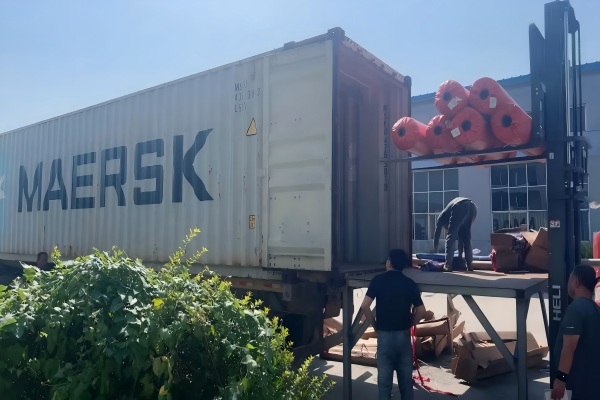
This final stage is where many supply chain issues happen. I have seen clients’ frustration firsthand when a shipment is delayed or arrives damaged. It all comes down to attention to detail. A good factory doesn’t rush this process. They ensure the turf is fully cured before rolling it. They use a hard, durable paper tube for the core so the roll doesn’t get crushed. They wrap the roll completely, with no gaps, and seal the ends tightly. These may seem like small things, but they make a huge difference in the product that arrives at your warehouse.
Quality Control During the Final Steps
Clear communication is key here. As a buyer, you have the right to oversee this process.
- Final Inspection: Before rolling, a final quality check should be done for any defects in color, tufting, or backing.
- Rolling: The turf should be rolled tightly and evenly to prevent creases. The direction of the fibers should be consistent.
- Wrapping: The protective film should be thick and completely sealed. I always recommend adding an extra wrap at the ends of the roll for better protection.
- Loading: This is a major pain point. Ask for photos or a video of your container being loaded. This proves that the rolls were in good condition when they left the factory and were loaded correctly to prevent shifting and crushing during transit.
A good supplier will not hesitate to provide this evidence. This simple step builds trust and protects you from logistical nightmares.
How can you tell if artificial grass is good quality?
Are you afraid of paying for premium turf but receiving a low-quality product? Relying solely on a small sample or a technical sheet can be a costly mistake if the final product doesn’t match.
You can tell good quality by physically inspecting the product. Check for high density, strong tuft lock (try pulling out fibers), good yarn resilience (does it spring back?), and a uniformly applied backing. Most importantly, always compare the bulk product to your approved sample.
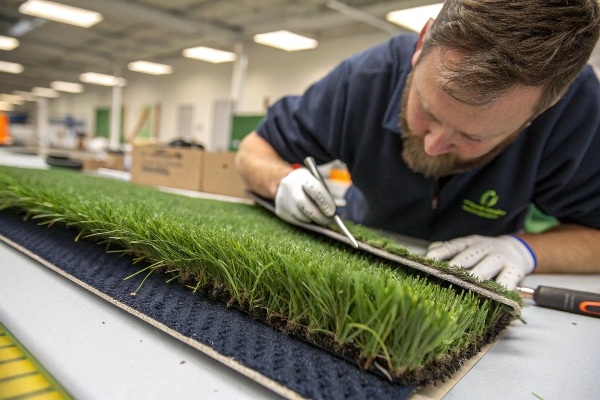
After years in this business, I believe the most important role for a wholesale buyer is not to be a manufacturing expert, but to be a good inspector. The core of my philosophy, and what we teach at QH Grass, is that the technical data sheet is a promise, but the physical product is the reality. Your job is to verify that reality. A factory’s quality can fluctuate from one batch to another. The only way to protect your investment and your reputation is with a hands-on inspection process.
A Practical Checklist for Wholesale Buyers
Here is a simple checklist you can use when you receive your product:
- Face Weight & Density: Does the roll feel as heavy and lush as the sample? Bend it to see how much backing is visible. Less backing means higher density.
- Tuft Lock Strength: Go to a corner of the roll and try to pull a few fibers out with force. They should not come out easily.
- Backing Quality: Look at the back. Is the coating applied evenly? Is it flaking or cracking when you bend the sample?
- Yarn Quality: Do the blades of grass spring back up when you press on them? Is the color consistent across the entire roll?
- The Golden Rule: Always lay your approved pre-production sample next to the new roll you’ve received. They should be identical in every way—color, feel, density, and height.
Trusting a supplier is important, but verification is essential. This is how you ensure stable quality and achieve greater profits for your business.
Conclusion
Ultimately, understanding the manufacturing process is not about becoming an engineer. It’s about knowing the critical points for inspection, which gives you control over quality and ensures your project’s success.
-
Learn about UV inhibitors to ensure your turf remains vibrant and durable against sun damage. ↩
-
Discover how PE contributes to the softness and feel of artificial grass, enhancing user experience. ↩
-
Explore the benefits of PP in providing support and resilience to artificial grass, ensuring longevity. ↩
_画板-1.png)
_画板-1.png)